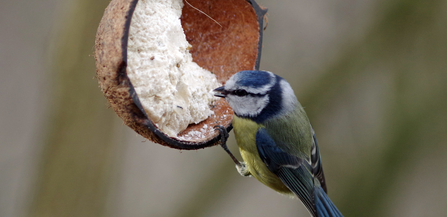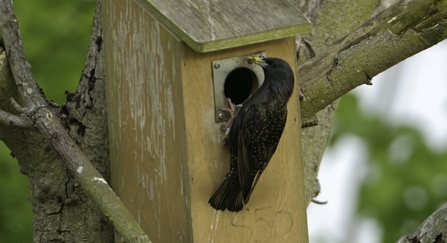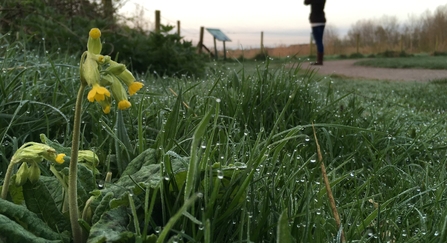Wild creatures might be sleeping soundly under log piles, heaps of leaves or compost heaps, so don’t disturb any potential hibernators. If you need to have a bonfire, make a new heap of material. If there’s one still waiting since autumn, resist the temptation to pile some more on top and set fire to the lot – you don’t want roasted hedgehog!
Mid winter wildlife gardening
Jon Hawkins - Surrey Hills Photography

Gillian Day
With the short days and cold weather, it’s important to keep plenty of food available for the garden birds. Look for high calorie foods, such as fat balls, suet pellets and peanut butter for birds. Choose high quality foods for maximum benefit, the more calories the better – birds don’t diet! Small birds need to eat at least 30% of their own bodyweight just to get through a cold night. The greater variety of foods you offer, the more birds will come to your garden.
Drinking water is essential – you might have to refill birdbaths daily in hard weather. As mine is a big stone one, in winter I use a big plant saucer that’s easy to tip out and rexharge. Melt holes in frozen garden ponds to allow access to water and avoid a build-up of gases from decomposing vegetation beneath the ice. Fill a saucepan with boiling water and stand it on the ice to form a hole – whacking the ice to break it causes shock-waves that can stun or kill delicate creatures.

Common starling (Sturnus vulgaris) adult with insect food arriving at nestbox to feed chicks- Chris Gomersall/2020VISION
Any bird boxes that haven’t been cleaned out yet should be emptied and disinfected as soon as possible – put them back up and add a little dry hay. Small birds or mammals will use boxes as night-time roosts. Small birds are known to form communal roosts to share their body heat on cold nights – the record is sixty-one wrens huddled in one box! Put up new boxes now, to give the birds time to become accustomed to them before the breeding season. Click here for instructions on making your own.

This is the time to plant bare-rooted trees, shrubs and hedging, as long as the ground isn’t frozen or waterlogged. Add some native species to your garden for shelter, fruit and those specialist insects. For more info about tree planting, click here.
Finish winter pruning of overgrown trees and shrubs before growth begins again. By pruning carefully, over a couple of years you can form perfect nest sites in trees and hedges.

Tom Hibbert
It’s also time to think about flowers – order bulbs to plant ‘in the green’ (ie. growing, not dormant). These are delivered from January, and it’s the best way to establish favourites such as snowdrops and winter aconites. Some wildflower seed needs a period of cold after sowing to provoke germination (vernalisation) so it’s a good time to sow cowslip, primrose and oxlip. You can sow them as usual in a seed tray then leave it outdoors for exposure to frost and thaw.
Lastly, start a wildlife journal. Record what you see in your garden so you can look back on the differences you’ve made, the new species you’ve attracted and how the weather and seasons change. Add photographs and sketches, make notes of ideas for further improvement, what worked and what was a disappointment, and give yourself something to remind you of the glories of the garden when the cold season comes around again.

